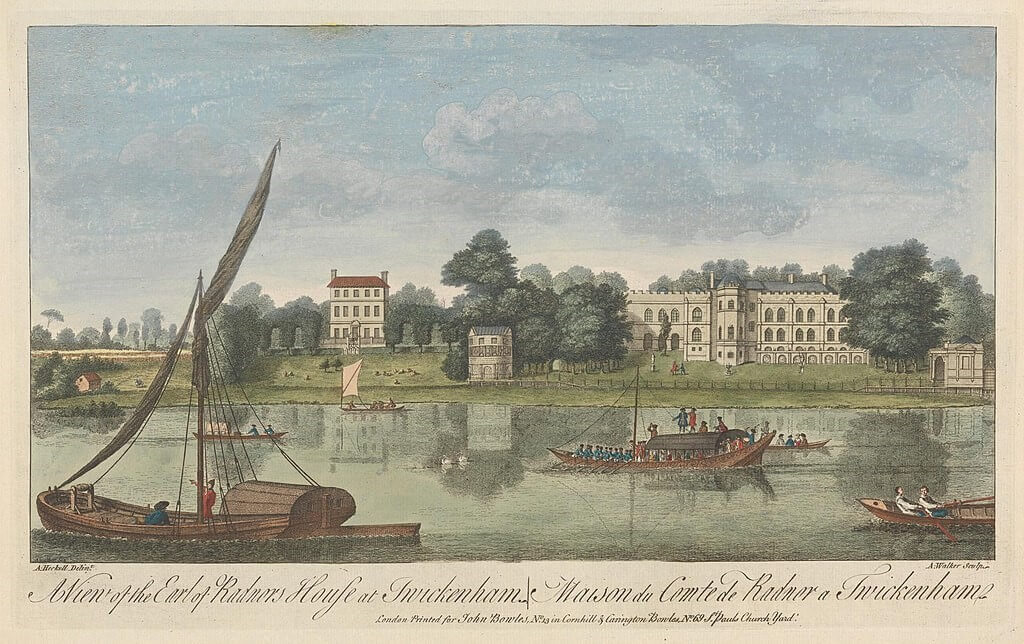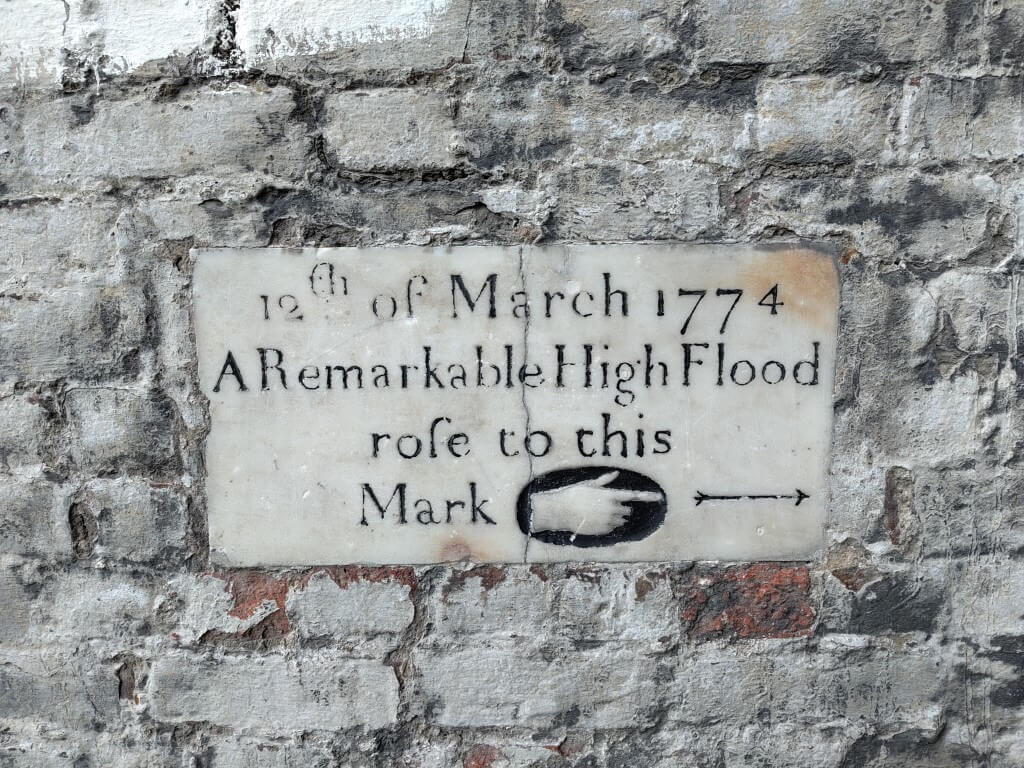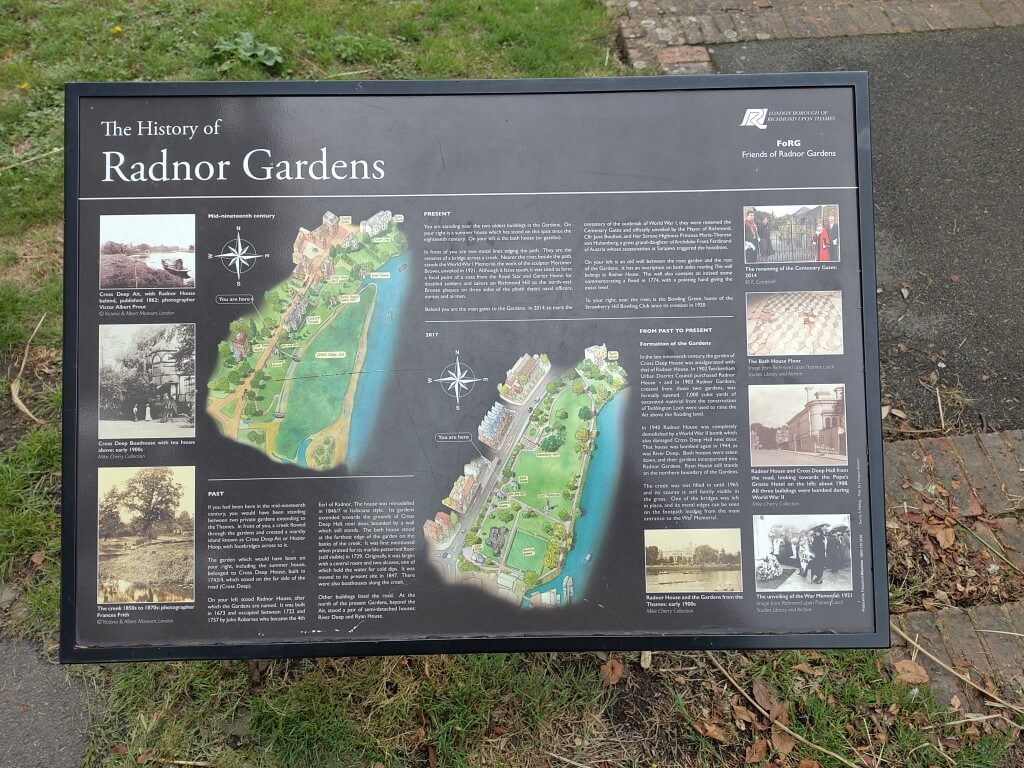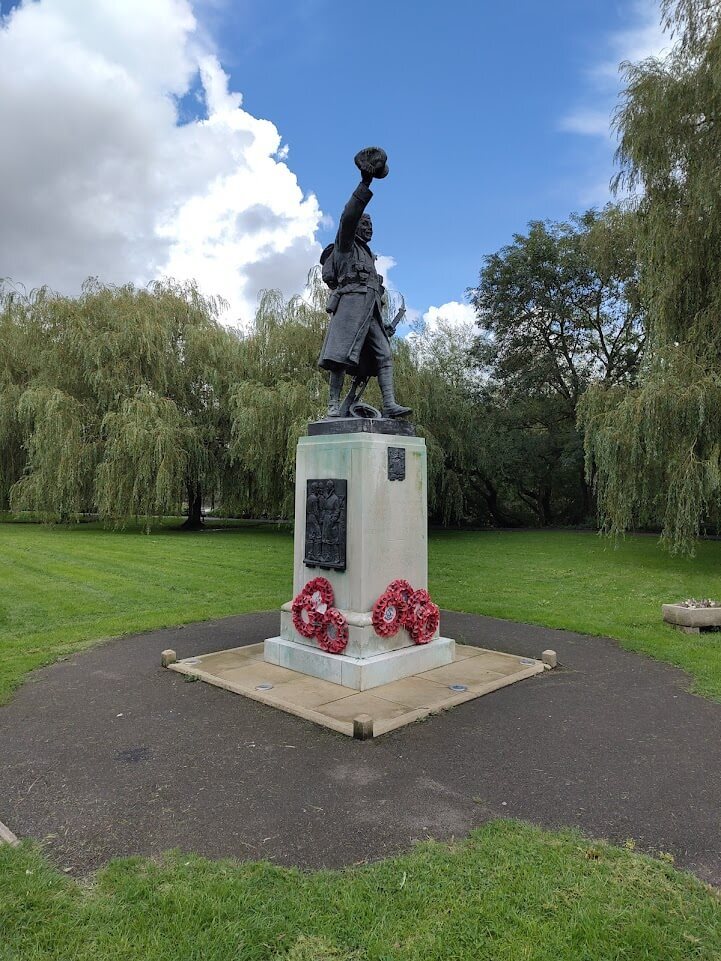The gardens were created in 1903 by Twickenham Urban District Council from two riverside properties:
- Radnor House (from which the name derives) formed the central section of the gardens;
- the riverside garden of Cross Deep House formed the southern area.

Two eighteenth-century buildings belonging to the early properties remain in the Gardens: a bath house (or gazebo) and a summer house. There is also an old wall marking the boundary of the grounds of Radnor House.
During the Second World War, two nearby houses were bombed and later demolished. Their land was incorporated into the Gardens, extending them to the north. Radnor House was also largely destroyed by an unexploded bomb.
Read more about Radnor House and the Gardens at the Twickenham Museum including a dedicated book by FoRG member Mike Cherry.

Near the Cross Deep road is a walled area known as the Rose Garden, which has a plaque denoting the highest level of flooding, where on "12th of March 1774, A Remarkable High Flood rose to this Mark". The plaque includes a finger pointing to the water's height, which would have been approximately eight feet (or 2.5 m) above sea level.
Originally, a creek flowed through the Gardens, creating a marshy island known as Cross Deep Ait with footbridges to cross over to it.
In 1903, excavated material from the construction of Teddington Lock was used to raise the Ait above the flooding level, but the creek was not filled in until 1965.
An information board near the main entrance to the Gardens gives more detail about their history.

The Gardens today
The Gardens are mostly grassy, much of it gently sloping towards the river, bounded on the west by a rockery. Paths run around the Gardens.
Along the river bank are several ancient willows. An ash tree is marked with a tag, indicating that it is being observed for dieback. Other trees in the Gardens include yew, oak, holly and walnut.
An exotic monkey puzzle or Chilean pine tree was also recently replanted in 2024.
Benches along the paths afford views of the river and local church, including recent seats at the Twickenham War Memorial.

War Memorial and Gates
The First World War Memorial stands near the river. Perhaps the most significant public work of sculptor Mortimer Brown, the Memorial was unveiled in 1921 and sited to form a focal point of a vista from the Royal Star and Garter Home for disabled soldiers and sailors originally on Richmond Hill.
The Memorial's inscription reads 1914–1918 TO THE GLORIOUS MEMORY OF THE MEN OF TWICKENHAM WHO FELL IN THE GREAT WAR. THEIR NAME LIVETH EVERMORE AND TO THOSE WHO GAVE THEIR LIVES IN THE WAR OF 1939–1945.
To mark the centenary of the outbreak of World War I in 2014, the central gates to the gardens were redesigned and renamed the Centenary Gates. They were officially unveiled by the Mayor of Richmond upon Thames and Cllr Jane Boulton, with two local residents, Anthony Bailey OBE and his wife, HSH Princess Marie-Therese von Hohenberg, a great grand-daughter of Archduke Franz Ferdinand of Austria-Hungary, whose assassination in Sarajevo in 1914 precipitated the outbreak of the Great War.
In 2017, the Memorial was awarded Grade II listing.
Playground
The playground has a variety of equipment, mainly for younger children. It is regularly monitored and maintained by the Council. Recently, FoRG supported a consultation which resulted in the purchase of a basket swing and play panels.
Bowling Club
Strawberry Hill Bowling Club has been a feature of Radnor Gardens since 1920. It is now a vibrant, community club that aims to promote the sport of Bowls in particular, and provide recreation and enjoyment for all.
Throughout the season, which runs between April and September, the club holds a number of open days and afternoons where the general public is encouraged to come and have a go at this delightful sport in the splendid surroundings of Radnor Gardens.
The club works closely with FoRG on occasions throughout the year, especially in regard to summer events within the gardens.
Strawberry Hill Bowling Club celebrated its centenary in 2020 with the local community throughout the season.
Cafe
In the recent past, Radnor Gardens hosted a local onsite cafe for many years.
This friendly community space was open daily when weather permitted, serving quality fair-trade coffee, tea, delicious breakfasts, lunches, cakes and organic ice creams.
A community notice board advertises local events and businesses. A toilet with disabled access and baby-changing facilities is available when the cafe is open.
The 325-square-foot space is available to rent. Please enquire with Avison Young for further details.
